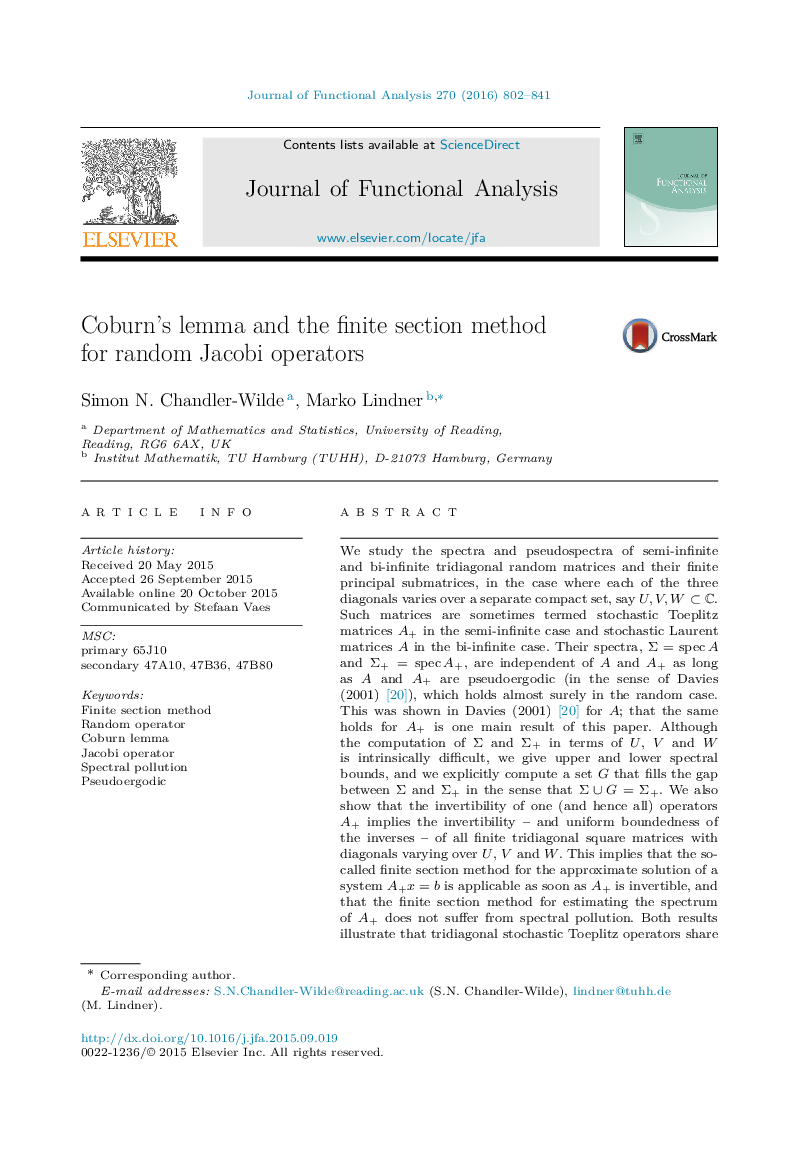| Article ID | Journal | Published Year | Pages | File Type |
|---|---|---|---|---|
| 4589939 | Journal of Functional Analysis | 2016 | 40 Pages |
We study the spectra and pseudospectra of semi-infinite and bi-infinite tridiagonal random matrices and their finite principal submatrices, in the case where each of the three diagonals varies over a separate compact set, say U,V,W⊂CU,V,W⊂C. Such matrices are sometimes termed stochastic Toeplitz matrices A+A+ in the semi-infinite case and stochastic Laurent matrices A in the bi-infinite case. Their spectra, Σ=specA and Σ+=specA+, are independent of A and A+A+ as long as A and A+A+ are pseudoergodic (in the sense of Davies (2001) [20]), which holds almost surely in the random case. This was shown in Davies (2001) [20] for A ; that the same holds for A+A+ is one main result of this paper. Although the computation of Σ and Σ+Σ+ in terms of U, V and W is intrinsically difficult, we give upper and lower spectral bounds, and we explicitly compute a set G that fills the gap between Σ and Σ+Σ+ in the sense that Σ∪G=Σ+Σ∪G=Σ+. We also show that the invertibility of one (and hence all) operators A+A+ implies the invertibility – and uniform boundedness of the inverses – of all finite tridiagonal square matrices with diagonals varying over U, V and W . This implies that the so-called finite section method for the approximate solution of a system A+x=bA+x=b is applicable as soon as A+A+ is invertible, and that the finite section method for estimating the spectrum of A+A+ does not suffer from spectral pollution. Both results illustrate that tridiagonal stochastic Toeplitz operators share important properties of (classical) Toeplitz operators. Indeed, one of our main tools is a new stochastic version of the Coburn lemma for classical Toeplitz operators, saying that a stochastic tridiagonal Toeplitz operator, if Fredholm, is always injective or surjective. In the final part of the paper we bound and compare the norms, and the norms of inverses, of bi-infinite, semi-infinite and finite tridiagonal matrices over U, V and W. This, in particular, allows the study of the resolvent norms, and hence the pseudospectra, of these operators and matrices.
